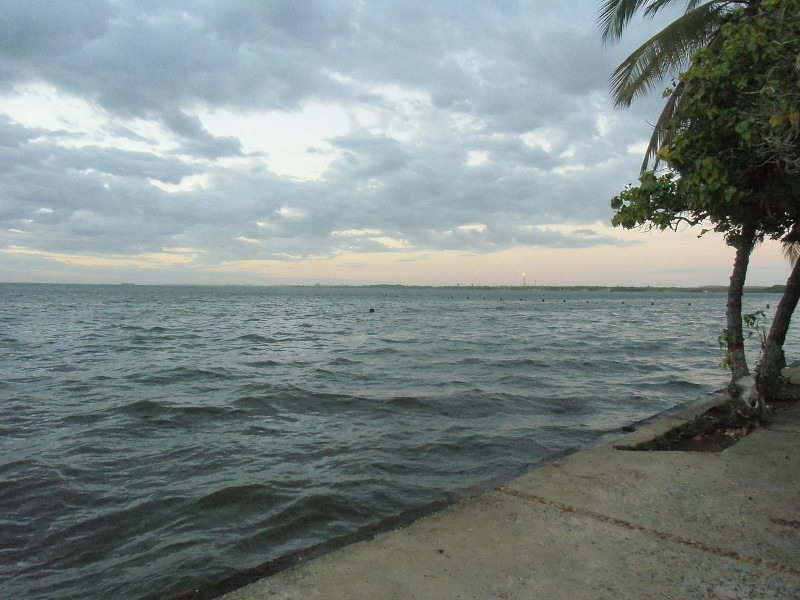
Lake Maracaibo Facts
- This remarkable geological feature is best known, albeit deceptively, throughout the world by the english language name of Lake Maracaibo. It also holds at least one other accepted general title, though. Thats the term of Lago de Maracaibo in Spanish.
- Meanwhile, the local Indigenous Peoples have yet another designation for the natural wonder. In the ancestral language of the Añú, it bears the moniker Coquivacoa. Still more tribes also inhabited the region once, holding their own names for the feature.
- It’s currently unknown exactly when the native inhabitants first noticed the site. In more modern times, however, the first European explorer to discover it was Amerigo Vespucci. He, along with others of his fleet, first spotted it on August 24, 1499.
- The mentioned deception stems from its consideration as a lake by many people. Due to its unusual characteristics, it does not technically meet all the normal qualifications for such a classificiation. A certain amount of debate among scientists thus exists.
- Today, the amazing Lake Maracaibo plays an extremely important role in its region of the world. The large body of water itself serves as a prime fishing location for the country in which it sits. Various forms of agriculture also thrive along its shores.
- Sadly, though, it also represents the primary source of both oil and natural gas for the entire region. Oil pollution from spills thus threaten to destroy its natural state. Despite these factors, however, concerted efforts to protect its state remain ongoing.
Related Articles
Lake Maracaibo Physical Description
The awesome Lake Maracaibo typically enthralls those individuals who visit it. It generally does so for a variety of reasons, however. It boasts both an impressive size and captivating beauty of its own, despite man’s presence. That sets it apart from many similar sites.
Overall, the body of water possesses an elongated, vase-like shape. Extending rouhgly north to south, it has a maximum length of approximately 130 mi (209 km). From the general east to west direction, though, it measures roughly 75 mi (121 km) at its widest point.
Though naturally quite irregular, the shoreline measures an equally impressive total of about 621 mi (1,000 km). Taken together, these provide it with a surface area equaling roughly 5,217 sq mi (13,512 sq km). Yet, its deepest point only reaches around 115 ft (35 m).
The extraordinary Lake Maracaibo further catches the eye with even more marvels. That’s because a total of eight natural islands also appear within its confines. Some formed via sedementary actions, while others originated through tectonic activity in the remote past.
Lake Maracaibo Location, Formation, and Ecology
Nature formed the incredible Lake Maracaibo in a region of the globe already well known for its abundance of other geological wonders. That exact location therefore won’t surprise many people. It lies situated within the borders of the continent of South America.
Inside of that greater area, however, it sits inside the confines of the country now known as Venezuela. That nation itself lies on the northernmost portion of the landmass. Within the country, the remarkable lake’s setting puts it in the approximate northwestern section.
This breathtaking phenomenon of natural processes has origins dating far back into prehistory. In fact, it represents one of the oldest known lakes on the entire planet. Research places its creation as a lake at a time dating back to roughly 36 million years ago.
It owes its original formation to the collapse of local faults. At that remote time, the uplift formed the Andes. Multiple rivers, as then and now, feed freshwater into it. Yet, since it’s open to the ocean at one point, this mingles with seawater, creating a unique setting.
Despite, or some might argue because of, this unique nature, Lake Maracaibo hosts an intriguing ecosystem. It teems with a variety of life. Its water contain enormous quantities of various forms of algae. This serves to support at least 145 different species of fish.
The lake also hosts numerous other forms of life, as well. These include such creatures as clams, shrimp, and blue crabs. Incredibly, two endangered aquatic mammals also frequent its waters. These consist of the Amazon river dolphin and the West Indian Manatee.
It’s also renowned for the existence of an astonishing weather phenomenon. Named the Catatumbo lightning, this occurs where the river meets the lake. It originates in storm clouds, and happens 140 – 160 nights per year, with 16 – 40 lighting strikes per minute!
Features Sharing Its Region
Check out our other articles on 5 Captivating Caribbean Sea Species, Eurasian Brown Bear, Table Mountain, Snake’s Head Fritillary, Spinetail mobula, Mangrove Monitor
